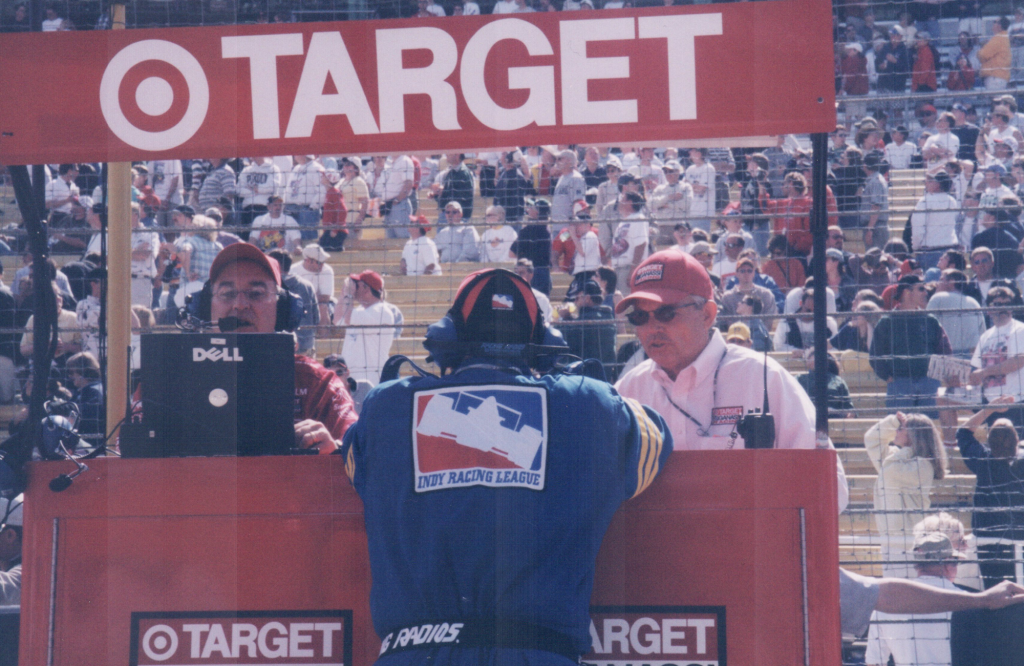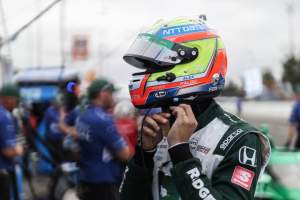Imagine working on the Apollo Space programme, troubleshooting spy satellites, writing the software to design a hull of a destroyer battleship and winning the Indianapolis 500?
It really feels like Chip Ganassi Racing’s Jim Hamilton has done it all, and he joined The Race for a rare and exclusive interview to talk about his career and his current role with the team.
He’s immediately made me feel right at home – even though we’re talking on Zoom – having read a recent The Race feature on Alex Palou. He’s even come equipped with a career cheat sheet, which tells you just how much he’s achieved and how many things there are to remember. It’s no reflection on his memory, by the way, which is absolutely impeccable.
Hamilton grew up in Pittsburgh and one of his friends there had an Austin-Healey Frogeye Sprite that opened his eyes to racing. He moved to California to work in the aerospace industry after graduating from the prestigious Carnegie Mellon University – also in Pittsburgh, where street racing was also common – and it was in California where he began racing locally.
It wasn’t long before he was brushing shoulders with the likes of Bruce McLaren and Dan Gurney, the latter of which would provide a home for Hamilton in the All American Racer’s team as his first top job in motorsport, having worked for VW and BMW through the 1970s in mostly road car focused roles.
Stints at PacWest and Patrick Racing in IndyCar followed before Chip Ganassi snapped up Hamilton the year that legendary engineer Mo Nunn left to set up his own team.
Anyone who knew Nunn or about him will realise what a loss it was, but bringing someone on with Hamilton’s experience paid off.
He started as an engineer with Ganassi, having come from working on Scott Pruett’s car at Patrick before joining Ganassi, but his role quickly became a sort of math-based motorsport trouble-shooter, bridging the gap between the feedback given by the drivers and the complicated data coming from the car to try and optimise the performance of the whole car.
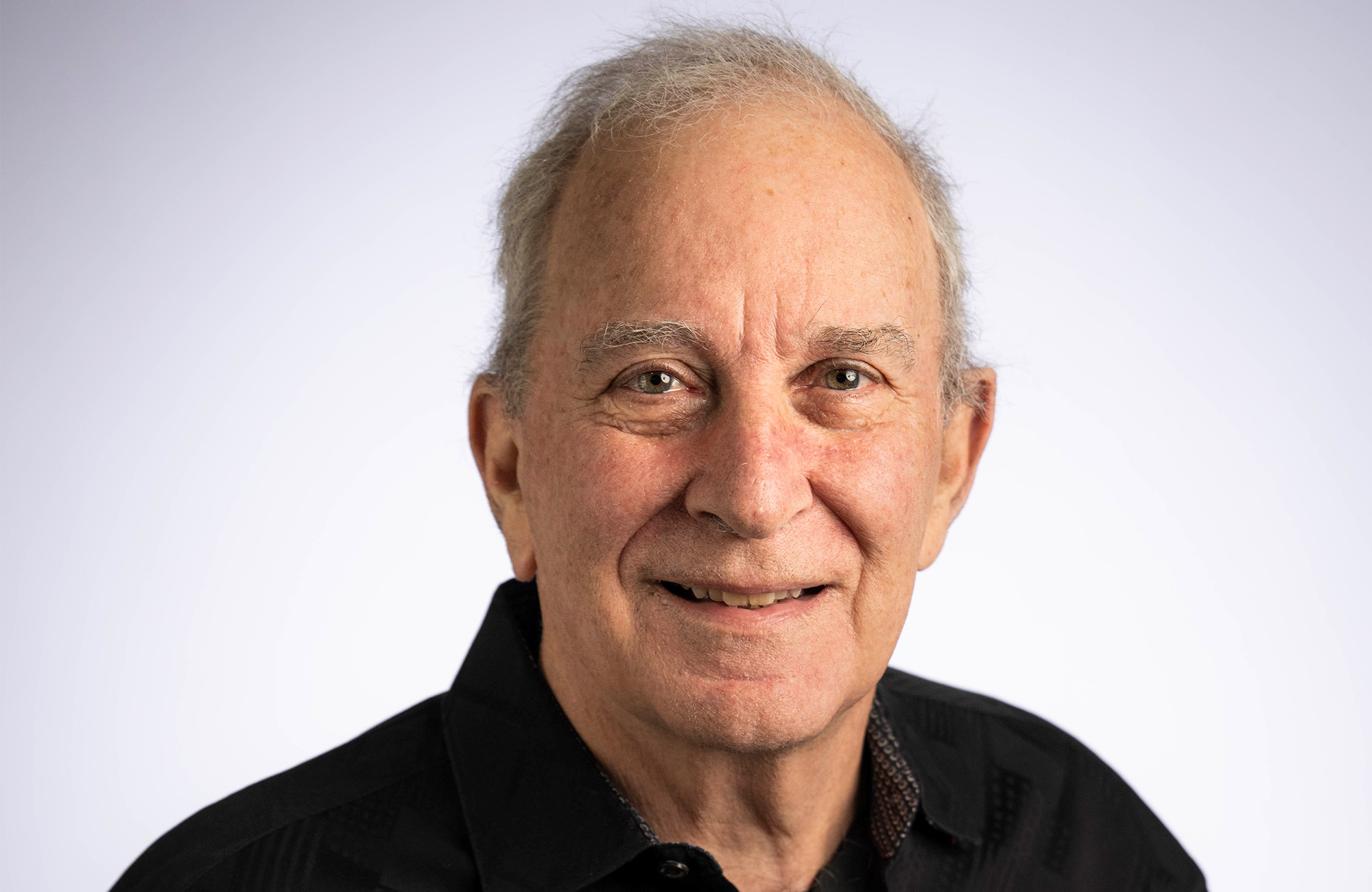
With Dario Franchitti working as a driver advisor to the team tasked with improving and adapting driving style from track to track, Hamilton does a similar job except he’s working with the drivers to try to understand the car better from an engineering aspect, with the drivers tasking him to investigate and develop in certain areas when the car is lacking.
“I’m basically a track performance engineer when we’re running, at the back of the timing stand, and that really helps me stay aware of where the team is topically,” Hamilton says. He’s often working from home these days, but there’s a glint in the eye when it comes to describing being at the race track, presumably a second home.
“I’m not really assigned to any driver in general. But last year, for example, whenever I was there, when we were running, I was at the back of Jimmie Johnson’s stand which was delightful, because he had such a different perspective, a great guy to work with and his engineer Eric [Cowdin] was just perfect for him.
“But a lot of the requests came from Alex [Palou], Scott [Dixon] and Marcus [Ericsson], and their engineers.
“So yeah, it’s multidisciplinary, and sort of free will. It’s the specialised studies, they nearly always involved the drivers and nearly always trying to characterise the driver, tyre, track interaction or the aero.
“Driving in traffic at the Speedway [Indianapolis] became a pretty big focus of ours and tried to put it in math terms so that we could grasp it and even hold our simulation efforts accountable ultimately, to agree with the driver.
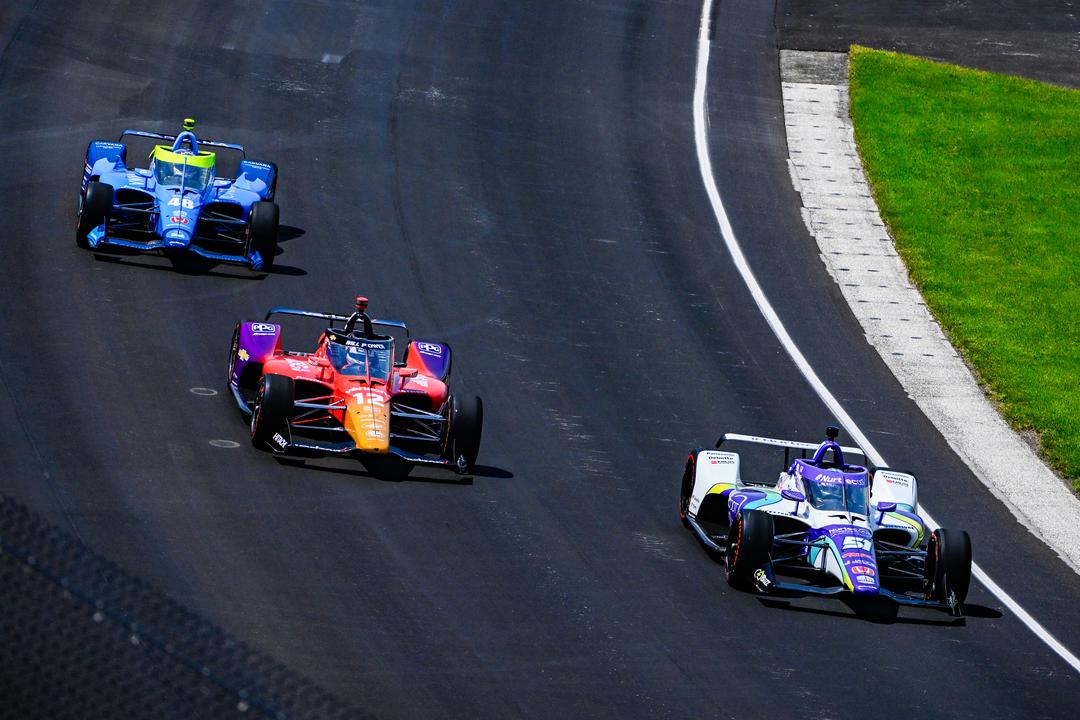
“So there’s always truth-telling or calibration exercises for simulation efforts that involve the drivers, especially the driver in loop simulator.”
Back in 1999, Hamilton would be working with simulation in various aspects in its infancy in motorsport – he even brought a self-written vehicle dynamic simulation with him when he arrived at Ganassi.
Of course now simulations have improved and have moved out of house to the engine manufacturers in most cases, but there’s still plenty Hamilton and the team can do with simulation, AI and various other aspects of computer software that can help.
To know that Ganassi has someone behind the scenes they can just employ like a trouble-shooter perhaps explains one of the reasons the team has been so successful, and consistently successful at that. Especially at the Indianapolis 500 where it feels the team is rarely without a car capable of winning.
Hamilton is perhaps so much more effective because he has racing experience – “I only had one talent and that was car control” – which means he can understand and communicate with drivers on one side, and deal with the rigours of engineering the car and understanding complicated simulations and technology on the other.
His work with infamous short-track dirt racer Jimmy Sills – who will need no introduction in that world or for many North American racing fans – changing stagger with non-winged sprint cars in feet rather than inches really sparked a thirst for experimentation and that’s what has underpinned Hamilton’s work throughout his career.
“When I came to Ganassi we were allowed to develop items that aren’t allowed now, and there were several cars and engines available,” he adds.
“So we could play with differentials, even torque vectoring ones, and aerodynamics, we had a lot more freedom.
“As the series evolved into very much more spec, things changed.
“My habit of approaching things, trying to do something a little bit different, it’s always about – and Chip reminds us – flawless repetition of the same things at a very high level, week-to-week. And that’s the heart of our success and incredible teamwork, since the beginning, there’s been a very, very high level of teamwork that I hadn’t really experienced before, even back in the space business days.
“So there’s a consensus, but openness to ideas.
“My habit is to do something original, just about every time that somebody asked me to do something. So that habit has persisted.
“Even back with the first American spy satellite programme way, way back into the 1960s, was written in a computer language that I had, fortunately, encountered at university.
“I became the troubleshooter for that software, when the satellite was taking pictures of the moon and the stars instead of Russian military installations [the latter being the true purpose and the former a cover].
“I found that I had to think out of the box, because there was a stack of paper this high [holds hands far apart to depict a large stack of papers] with no instructions on how to proceed.
“So, it had to be somewhat innovative, and that’s become persistent, I would say.
“The focus of the work now is pretty much-specialised studies, often at the request of the drivers and the lead engineers. Just my paltry experience of amateur racing taught me to really listen and respect the drivers.
“It sort of gave me a lifelong habit of trying to take what the drivers were saying, and put it in mathematics to bridge the gap at a level that was perhaps beyond the obvious.
“So, I’m a bit of an outlier, not because of talent, but because I have the time to look at things a bit differently, certainly from the obvious, and try to build on that. And the team’s been very supportive of that.”
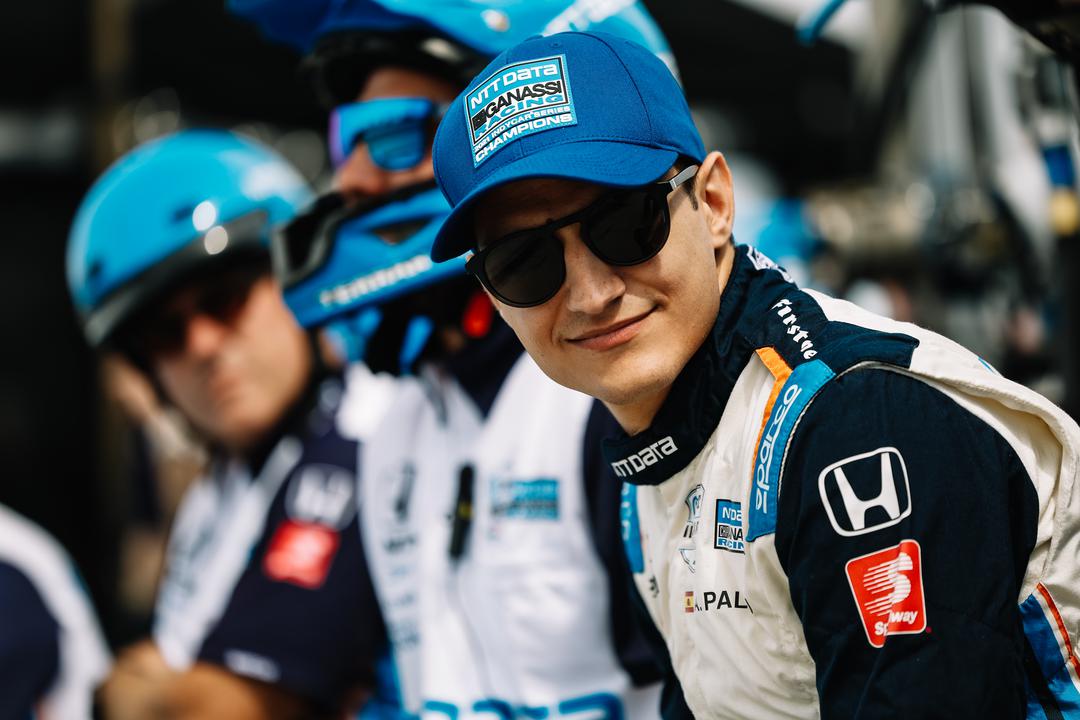
Hamilton’s been so impressed with Alex Palou during his tenure at the team, given his ability to analyse. Palou is credited inside the team with being able to break the track down into micro-sectors, but still understands that making changes to improve the car in one area might be detrimental to the overall lap.
It’s clear working with him is enjoyable for Hamilton, as well as dealing with Marcus Ericsson’s engineer Brad Goldberg who brought a new perspective from sportscars over to the #8 team in 2020.
Brad comes up when The Race asks how Hamilton manages the fact that drivers are variables and their feedback might not always translate into the diagnostics of what the car is doing out on track, and how to solve those issues.
“The lead engineers help a lot with that,” Hamilton says.
“A good example of those is Brad Goldberg, coming from the very successful sportscar end of our business there, and having to improvise and come up with new ways to question the driver about the car, they get better and better at describing what it is.
“We’re all in the truck together [the engineers] and as we go around, it’s very well structured. And yet, there’s no constraints that, everybody feels at ease. And so listening to how the other drivers and the other engineers describe things, I think, lifts the whole process quite a bit.
“But you’re right. I mean, it’s still quite possible that what a driver is saying, doesn’t come out in the math at all.
“There’s things that the drivers experience that we cannot simulate on the best driver in loop simulations.”
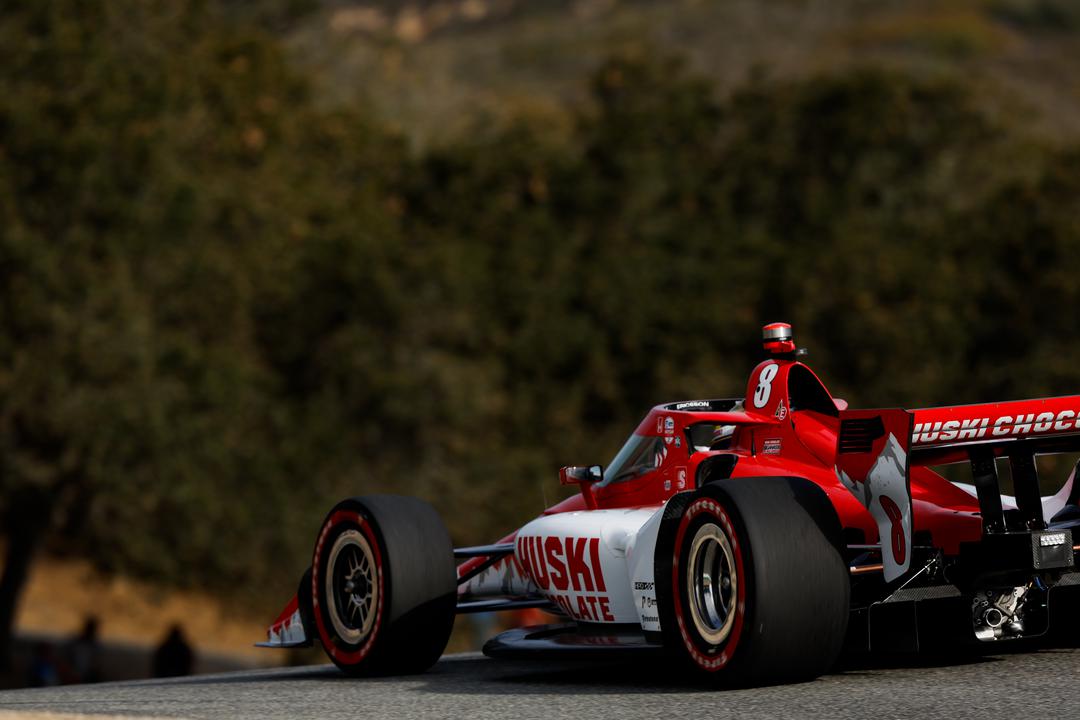
We can’t let Hamilton go without asking him about the achievements he’s most proud of given the things he has worked on.
From manned and unmanned space missions to deadly battleships all the way through to winning high-profile races in the wet in his early driving career and his work at Ganassi.
“There’s at least two categories [one for racing, and one for his other achievements],” he said.
“The Space Programme, I was so lucky to work on Gemini and Apollo and also the planetary Voyager, and Mariner projects early on when there was a lot to learn.
“But I think that I was the only troubleshooter as far as I know for the first spy satellite programme and managed to get it at least pointed in the right direction during the missions.
“It was a military project and they couldn’t recognise it officially because the programme did not exist, of course.
“But they informally thanked me for rescuing three missions.
“In racing, I think being able to help the drivers recently. And when I say help, at Ganassi anything that you do is going to be shared, and people are helping you at every side.
“So there’s nothing I think that I could claim, hey, I did this. It’s always ‘we’. But collectively, perhaps helping in individual situations, especially in the Indy 500. Perhaps just helping to understand the tyres.
“I would say it’s like building an experimental aircraft, it’s 90% done, 90% to go.
“So I think I have to end with collective humility on behalf of my team-mates. And the task is always daunting, and yet it’s a lot of fun.”
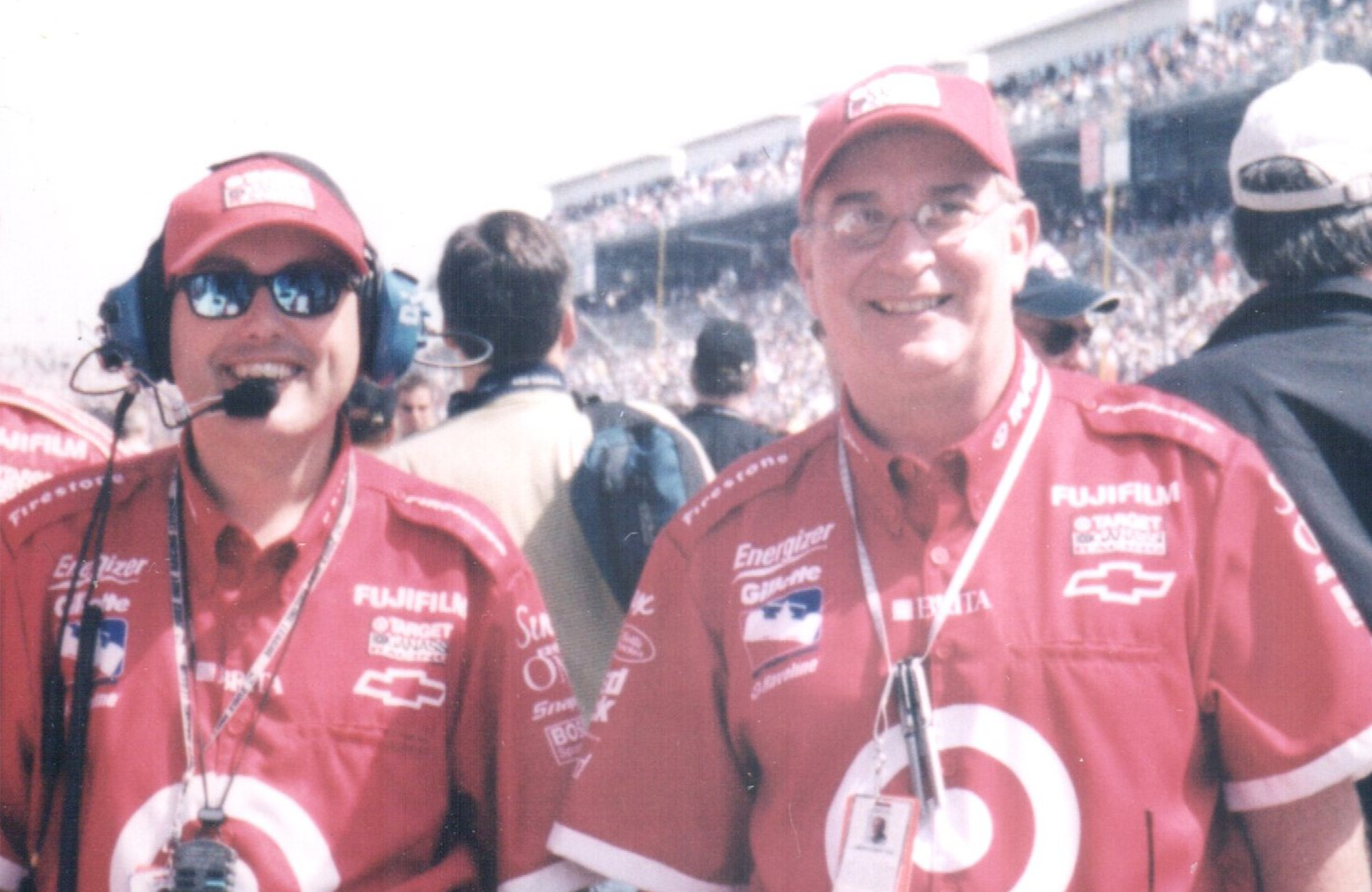
Not choosing his first Indy 500 win with Ganassi in 2000 with Juan Pablo Montoya or one of Scott Dixon’s six championships for example shows how – even though he has his own projects to focus on and he likely has the best and biggest resume of anyone at Ganassi – that he is still humble and still works in perfect harmony with the team.
Given the high-profile nature of the non-motorsport projects he’s been tasked with, it would be easy to become disconnected but his longevity within motorsport shows Hamilton’s deep understanding of how a team works and how it should be successful.
So there you have it, Jim Hamilton. He’s not someone who is thrown in front of a camera often, but he has one of the most interesting stories in the IndyCar paddock.
Arguably a hero before he reached the team, there’s no doubt Ganassi certainly values his input and what he has done for its success over the years.


